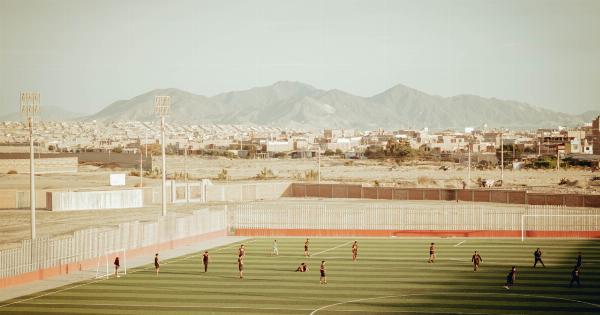Sports have always been an integral part of human society. From ancient times, people have engaged in various forms of physical activity for recreation and competition.
Sports have positive effects on physical and mental health, social interaction, and personal development. However, there is also a dark side to sports that is often ignored: the risk of brain damage and dementia due to repeated head trauma. This article explores the dark side of sports and the price of glory that athletes pay for their success.
CTE and Dementia: The Brain Trauma Epidemic
In recent years, there has been growing concern about the long-term effects of repetitive head trauma on athletes.
Chronic Traumatic Encephalopathy (CTE) is a degenerative brain disease found in people who have suffered repeated head trauma, including concussions and subconcussive hits. The disease is caused by the accumulation of an abnormal protein called tau in the brain, which damages brain cells and leads to dementia.
CTE was first identified in boxers in the 1920s, but it has since been found in other contact sports such as football, ice hockey, soccer, rugby, and wrestling.
The symptoms of CTE include memory loss, confusion, depression, aggression, and suicidal behavior. The disease can only be diagnosed post-mortem through brain tissue analysis.
The prevalence of CTE in active and retired athletes is a subject of intense debate and research. A study of 111 deceased NFL players found that 99% of them had CTE.
However, the study had limitations, and the results may not be representative of all football players. Other studies have found lower rates of CTE in football players. Nevertheless, the evidence suggests that athletes in contact sports are at higher risk of developing CTE and other types of dementia.
The Price of Glory: The Sacrifice of Athletes’ Brains
Athletes who engage in contact sports know that there is a risk of injury, including head trauma. Some athletes accept this risk as part of the game and are willing to sacrifice their bodies for the sake of victory and glory.
However, the long-term consequences of repeated head trauma are often not fully understood by athletes, coaches, and fans.
Athletes who suffer from CTE and other types of dementia often experience a tragic decline in their quality of life and relationships. They may lose their memory, personality, and ability to perform basic tasks.
They may become disconnected from their families and communities and face financial and legal challenges. They may also suffer from depression, anxiety, and other mental health issues.
The price of glory that athletes pay for their achievements can be devastating, not only for themselves but also for their loved ones and society as a whole.
The costs of treating and caring for athletes with brain damage can be enormous, and the loss of their talents and contributions can be significant.
Prevention and Support: The Responsibility of the Sports Industry
The sports industry has a responsibility to protect the health and well-being of athletes, both during and after their careers. This includes taking measures to prevent brain trauma and providing support for athletes who suffer from it.
Prevention measures include improving equipment and playing rules, educating athletes and coaches about the risks of head trauma and how to avoid it, and monitoring and treating injuries promptly and appropriately.
Some sports leagues and organizations have taken steps to reduce the risk of head trauma, such as the NFL’s concussion protocol and the introduction of VAR in soccer.
Support measures include providing medical and financial assistance to athletes who suffer from brain damage, including access to top-quality medical treatment, insurance coverage, and disability compensation.
This also includes raising awareness of the issue and promoting research to better understand and treat brain trauma.
The Way Forward: Balancing Sports and Health
The issue of brain trauma in sports is complex and multifaceted, involving ethical, medical, legal, and social considerations.
There is no easy or perfect solution to this problem, but there are steps that can be taken to minimize the risk and impact of brain damage on athletes and society.
One approach is to balance sports and health by promoting safer and healthier forms of physical activity, such as non-contact sports, fitness, and recreational activities, while still allowing athletes to pursue their passion and talent in contact sports. This requires a shift in cultural attitudes and values, away from the glorification of violence, aggression, and domination in sports to a more balanced and humane view of sports as a means of personal and social development and enjoyment.
Another approach is to improve the understanding and management of brain trauma in sports through research, education, and policy-making.
This includes supporting research to better understand the causes and consequences of brain trauma, developing evidence-based guidelines for preventing and treating brain trauma, and ensuring that athletes receive appropriate medical care and support.
Conclusion
The dark side of sports is a reality that cannot be ignored. Athletes who engage in contact sports are at risk of developing brain damage and dementia due to repeated head trauma.
This risk is not only a personal one, but also a societal one, as brain damage can have significant consequences for healthcare, social welfare, and economic productivity. The sports industry has a responsibility to address this issue by taking proactive measures to prevent brain trauma and providing adequate support for athletes who suffer from it.
The way forward is to balance sports and health by promoting safer and healthier forms of physical activity and improving the understanding and management of brain trauma in sports.





























